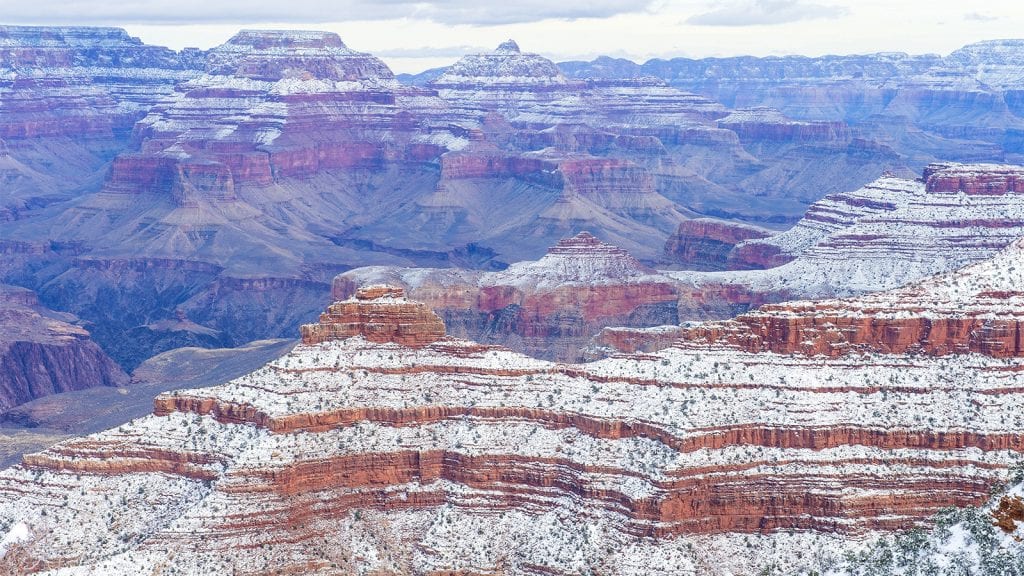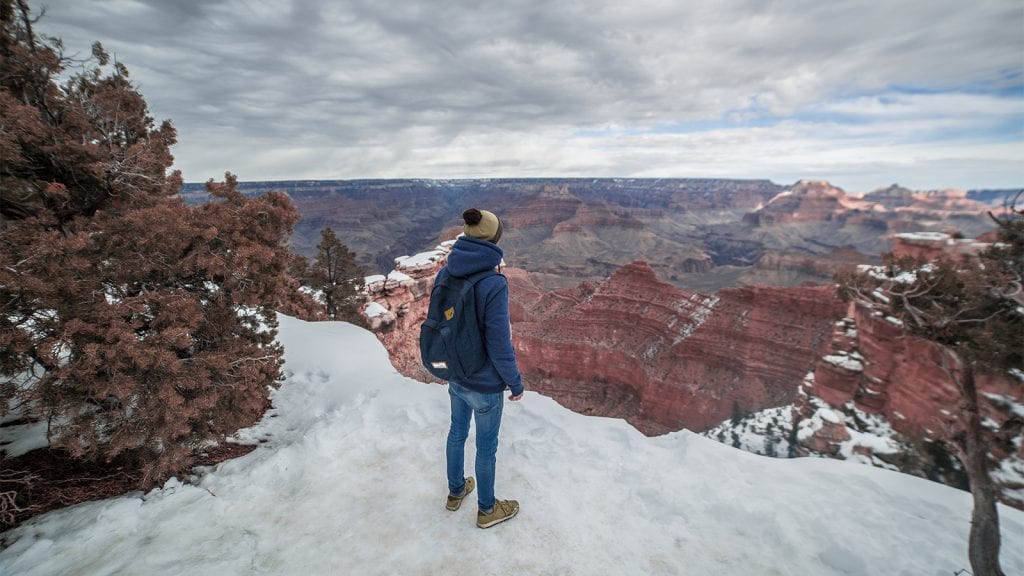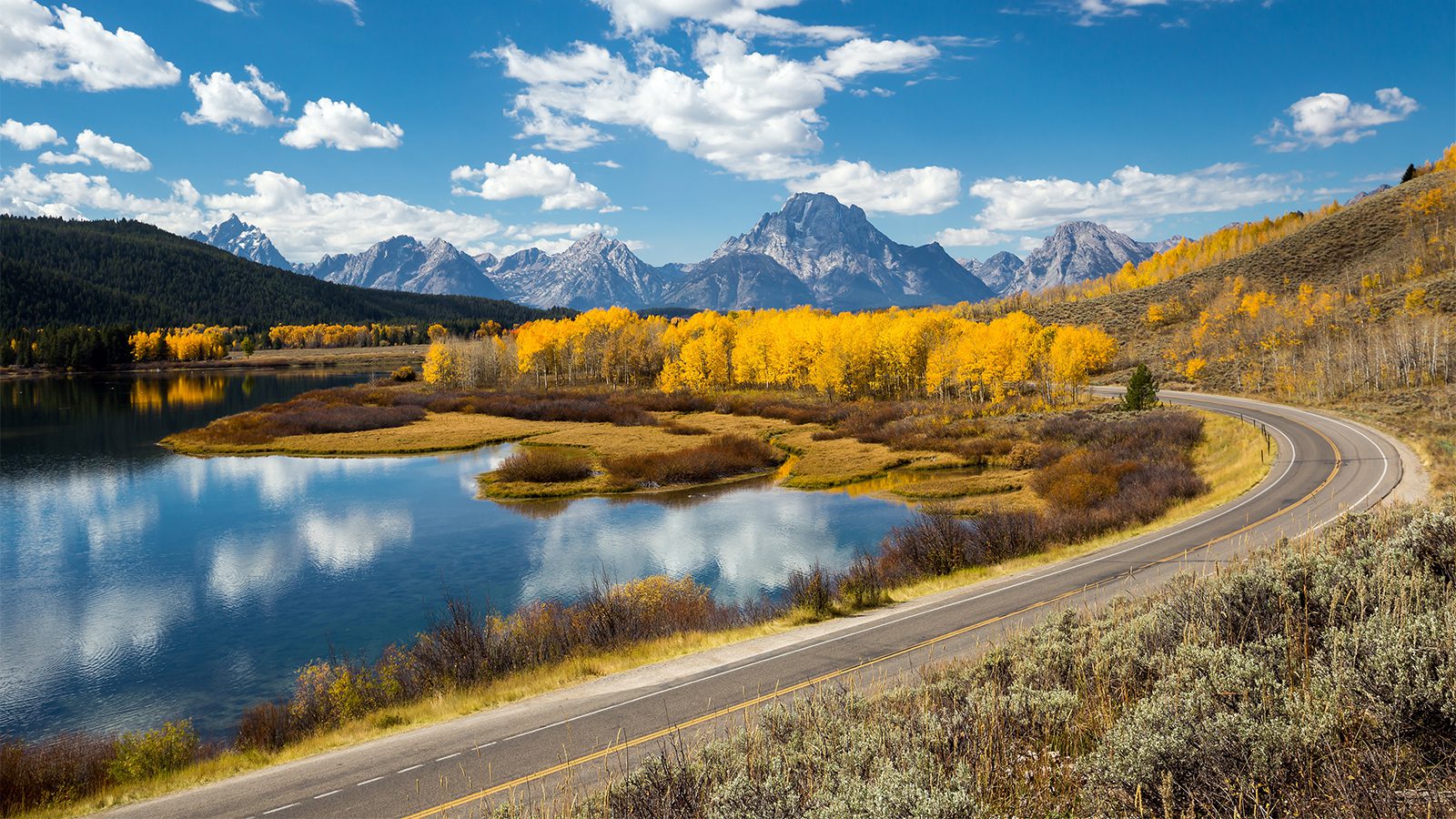The weather in Grand Canyon National Park varies according to its elevation. On the lower elevations along the Colorado River in the Inner Gorge, it’s warmer and can reach up to 100ºF (38ºC) during very hot summer days.
It’s generally dry all year except for during the winter and late summer when the seasonal weather pattern changes. The Pacific storm delivers higher precipitation and snow at higher elevations.
If you’re planning to the Grand Canyon National Park, remember to check the weather forecast to prevent an unpleasant trip with dehydration, hypothermia, or sunburn.
Average monthly temperature and precipitation
Seasons in Grand Canyon National Park
Summer (21 June to 22 September)

- Average Highs : 81 to 84ºF / 27 to 29ºC
- Average Lows : 47 to 54ºF / 8 to 12ºC
Summer is the most popular season to visit the Grand Canyon, with the park seeing the bulk of its visitors from June to August.
Expect to see large crowds at its most popular attractions on the South Rim, including Skywalk and Desert View Drive, and many trails, including Bright Angel and South Kaibab.
Summers at the park are also sweltering with highs in the 80s at the park’s higher elevations and reaching triple digits on the canyon floor, making some of its more strenuous hikes dangerous during these months. A full water bottle is essential for hiking in this weather. It’s not uncommon for temperatures in the Inner Canyon can reach up to 106ºF (38ºC) during the peak of summer in July.
Summer is an excellent opportunity to take advantage of such opportunities as whitewater rafting.
Read More : 12 Essentials to Bring for Summer Camping
Fall (23 September to 20 December)

- Average Highs : 52 to 76ºF / 11 to 24ºC
- Average Lows : 27 to 47ºF / -3 to 8ºC
The arrival of autumn in Grand Canyon national park sees temperatures become cooler and unpredictable. It’s not unusual to see highs still in the triple digits on the canyon floor or as low as 60 degrees.
Average temperatures throughout the park include highs in the mid-60s and lows in the 40s. With this in mind, temperatures are perfect for hiking the Grand Canyon’s trails.
Plus, the summer crowds have thinned dramatically. However, reservations for campgrounds on the canyon floor are incredibly competitive as this is one of the most popular times for backcountry camping at the Grand Canyon.
Read More : Tips for Camping at Grand Canyon
Winter (21 December to 19 March)

- Average Highs : 41 to 45ºF / 5 to 7ºC
- Average Lows : 18 to 21ºF / -8 to -6ºC
The clear advantage of visiting the Grand Canyon in the winter is the lack of crowds. If you don’t mind the colder weather, then you can enjoy the park’s attractions without rubbing elbows with other visitors.
It’s also a good time to visit the canyon floor, which is significantly cooler, though still with highs that reach into the 60s, making it a perfect time for hiking. Accommodations are also much easier to find and cheaper in the winter months.
The downside is the weather on the rims, which do see a considerable amount of snowfall in mid-winter. If hiking in winter, it’s highly recommended that you come equipped with crampons and waterproof boots.
Read More : Winter Camping Checklist – 11 Gear to Bring with You
Spring (20 March to 20 June)

- Average Highs : 51 to 70ºF / 10 to 21ºC
- Average Lows : 25 to 39ºF / -4 to 4ºC
Spring offers comfortable temperatures at all canyon elevations, making it a popular time to visit the park.
Average highs reach into the mid-60s with warmer temperatures on the canyon floor while lows drop into the low 40s at night. This makes spring an excellent time for exploring the park’s trails.
Crowds are also much thinner this time of year, except for spring break, which is around Easter for most schools.
Gaby Pilson
Gaby is a professional mountain guide with a master’s degree in outdoor education. She works primarily in the polar regions as an expedition guide, though she can be found hiking, climbing, skiing, sailing, or paddling in some of the world’s most amazing places when not at work.


